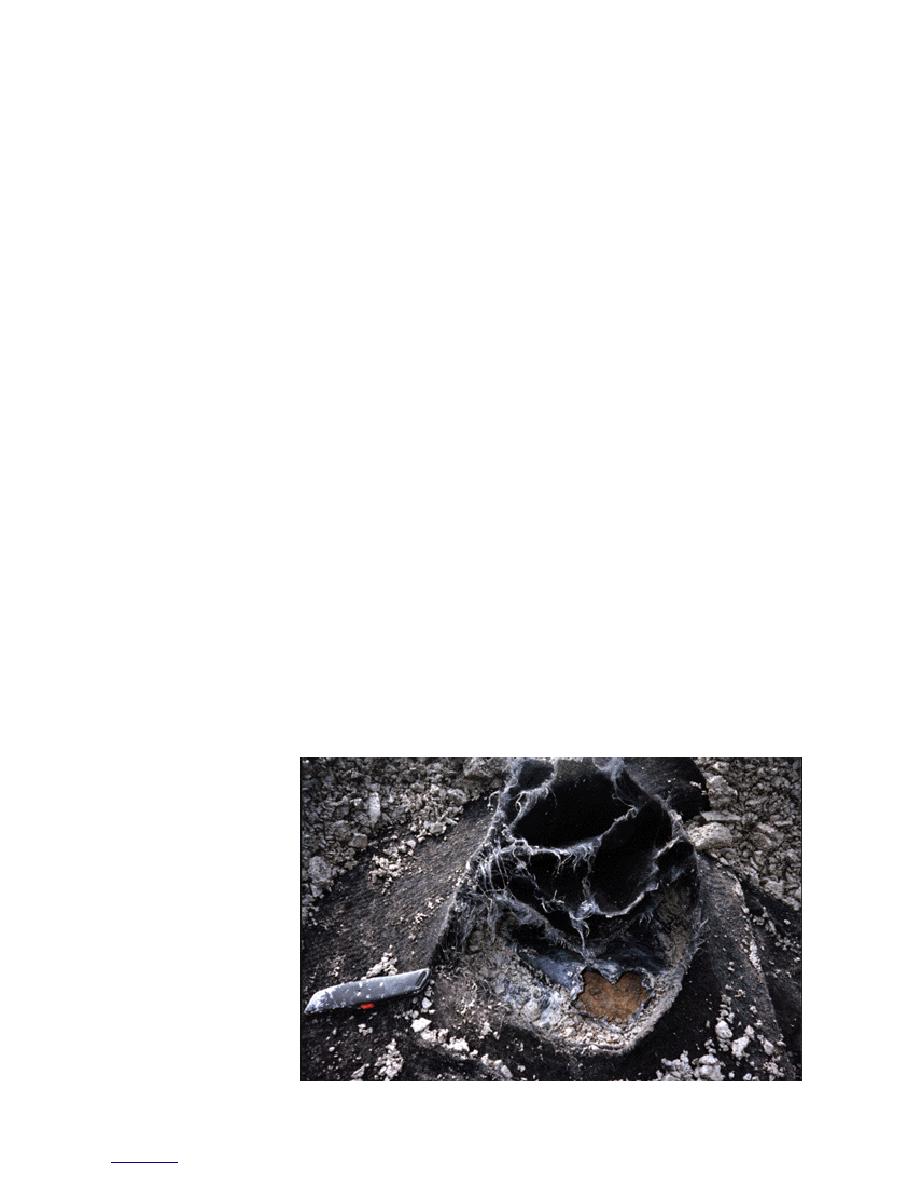
The most difficult part of sealing the mem-
Lime mixing. Mixing the lime and the clay soil
branes is caused by the folds or creases in the
went well. The lime was mixed into the top 102
membranes. The bottom membrane had numer-
mm (4 in.) of soil. Mixing to greater depths would
ous folds caused by the irregular excavation. The
have been difficult. Maintaining a uniform mois-
top membrane had a few larger folds caused by
ture content is important. Removing the mixed soil
the irregular soil surface.
for trucking to the MESL site was challenging. At
It may be necessary to walk on the membranes
times too much soil was removed and untreated
when sealing them. Care needs to be taken not to
clay was added to the clay-lime mixture.
puncture the membranes when doing so. Stones
caught in shoe treads can easily puncture the
Puncture test
membrane. Hard-soled shoes also can cause
It is critical that the upper membrane not be
problems.
punctured during construction or trafficking.
MESL ends. The MESL ends are the most com-
Even one puncture can lead to localized failure of
plicated part of the construction. The bottom
the MESL. If the failure is not corrected immediate-
membrane needs to be protected as the MESL is
ly, its size can increase rapidly. Traffic and wet
filled. Vehicles carrying fill soil need to travel
weather will speed the rate of failure. Therefore,
over the bottom membrane at the MESL ends.
one puncture was considered failure. The number
Geotextiles and plywood are possible methods of
of punctures was not quantified. Visual observa-
protection, but must be removed when the fill soil
tions were taken mostly along the wheel paths.
is in place so the membranes can be sealed.
The results are divided by the amount of protec-
When the membranes are sealed, the side of
tion used. The Permalon Ply X-210G (composite
the bottom membrane needs to be sealed to the
membrane) was analyzed separately because it
end of the bottom membrane. The top membrane
has some protection without a separate geotextile.
is then sealed to the bottom membrane. The exact
No protection. Two membranes without protec-
sealing order and method will change from site to
tion had the following test results.
site and needs to be determined in the field.
RUFCO 2010B. The membrane had numerous
Placing the geotextile. Placing the geotextile
puncture holes ranging from 12 to 50 mm (0.5
was easy and went quickly. Troops should walk
to 2 in.), depressions, scratches, and stretch
on the geotextile and not the membrane. Care
marks.
Permalon Ply X-210. There were numerous
must be taken when walking on the geotextile
holes and many depression marks on the mem-
because it will slide on some membranes.
brane.
Placing the wearing course. A 152-mm (6-in.)
gravel wearing course was used. It was difficult
One-layer geotextile.
to place a uniform thickness of gravel because the
RUFCO 1010B. There were many continuous
scratches on the wheel path, long stretch
surface of the MESL was not level. Care is still
needed when spreading
the gravel. A bucket
loader caught the top of
the MESL when spread-
ing the gravel (Fig. 28).
Figure 28. Top-membrane
tear, caused by a bucket
loader.
18



 Previous Page
Previous Page
